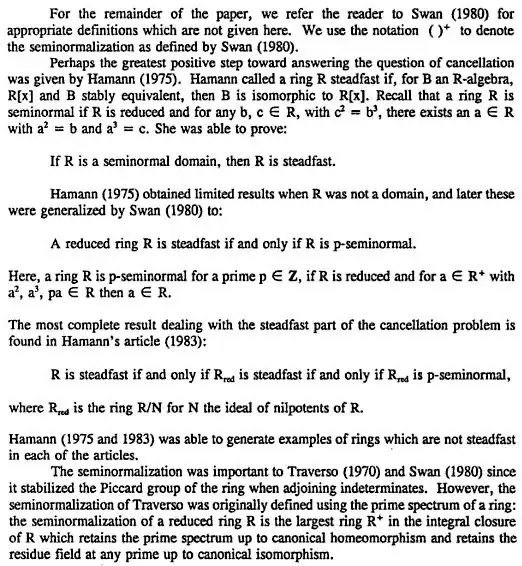Along the lines of "particular cases where the claim is true," if $R$ and $S$ are fields, then they must be isomorphic since they are distinguishable as the units (excepting zero of course) of $R[x]$ and $S[x]$, respectively, and an isomorphism conserves units.
More generally if we only know that one of $R$ or $S$ is a field, the claim is still true.
Suppose $R$ is a field and $R[X] \cong S[Y]$, where $X,Y$ are distinct indeterminates for clarity, and $f:R[X] \rightarrow S[Y]$ is an isomorphism. Since the nonzero elements of $f(R)$ are units in $S[Y]$, they must be degree zero, i.e. elements of $S$. Also the inverse image of $S$ is a subring of Euclidean domain $R[X]$, so $S$ is an integral domain.
Knowing that $f(R) \subseteq S$, we need only show $f$ maps $R$ onto $S$. Suppose $s \in S$. Then there exists polynomial $p(X) \in R[X]$ s.t. $f(p(X)) = s$. Let $p(X) = \sum_{i=0}^n \enspace r_i X^i$ where coefficients $r_i \in R$.
Now $f(X) = q(Y)$ for some polynomial $q(Y) \in S[Y]$, and degree of $q(Y)$ must be positive for $f(R[X]) = S[Y]$. Apply $f$ to $p(X)$ and compare degrees:
$$s = \sum_{i=0}^n \enspace f(r_i) q(Y)^i$$
Since $S$ is an integral domain, the degrees of $q(Y)^i$ are positive for $i \gt 0$. Thus the only nonzero coefficient of $p(X)$ is $r_0$, which shows $f(r_0) = s$. Therefore $f$ maps $R$ onto $S$ and $R \cong S$.

